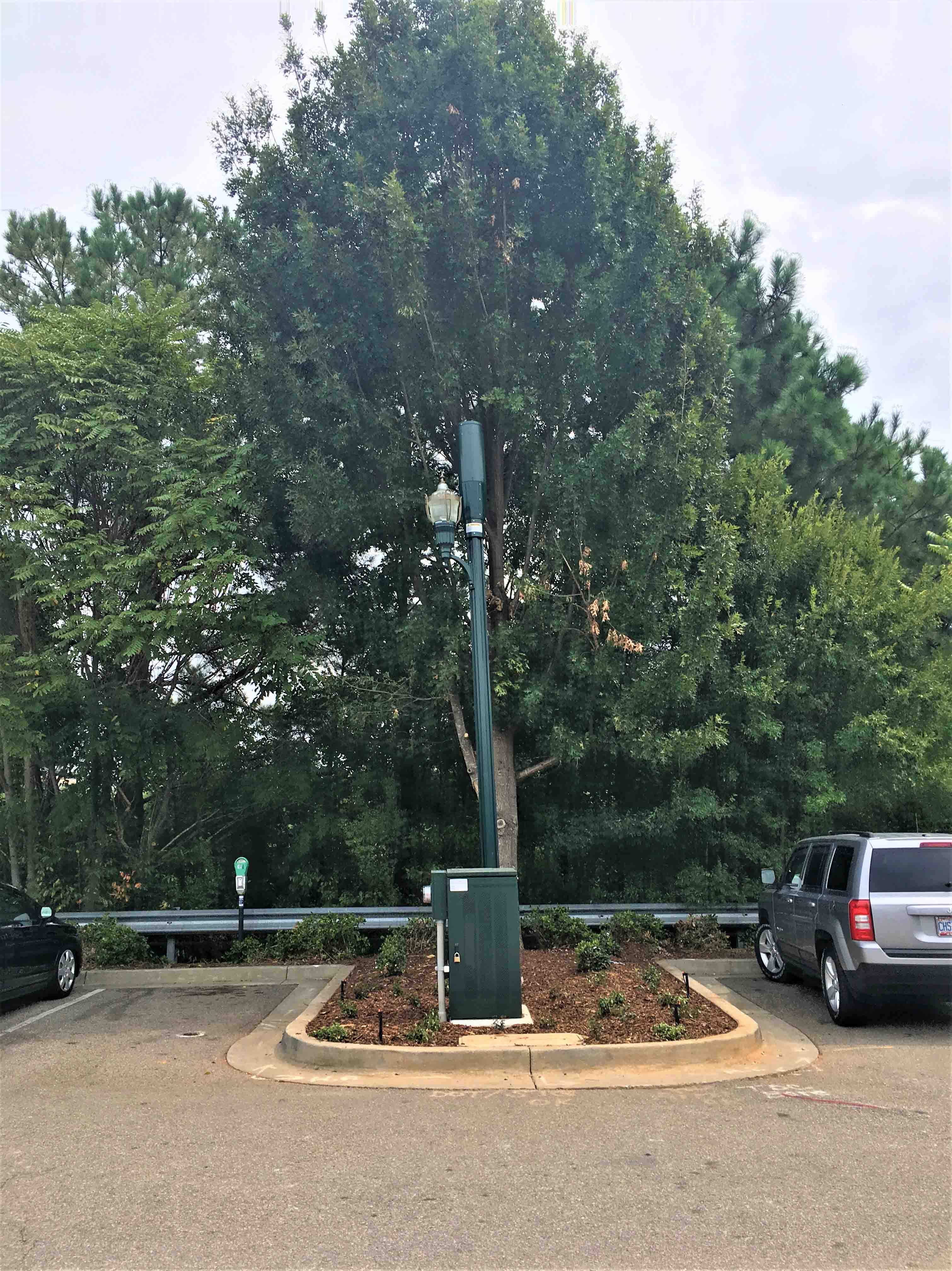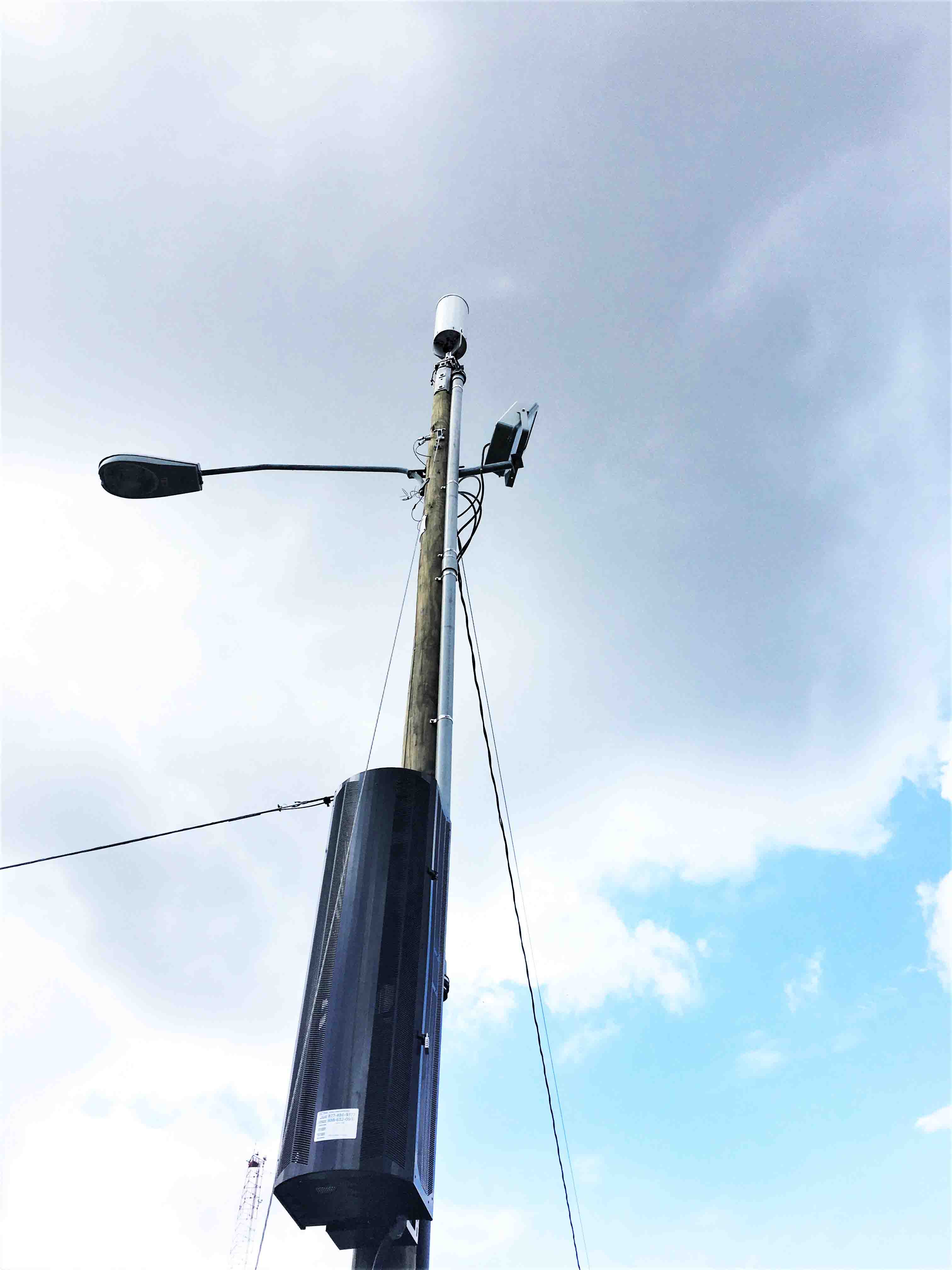Residents and businesses worldwide are increasingly reliant on handheld wireless devices to communicate and transmit data, and they expect ever-increasing processing capabilities and speed. To keep pace with user expectations, the telecommunications industry must rapidly build next-generation wireless networks and their associated infrastructure.

Small wireless facilities in the City of Columbia attach to telephone poles and other structures.
Small wireless facilities in the City of Columbia attach to telephone poles and other structures.
The newest version of performance standards for the mobile wireless industry is labeled as a generation. Fifth generation standards, commonly known as 5G, will require mobile wireless networks to provide greater bandwidth, which supports faster download speeds and the capability to run more complex mobile devices.
Unlike previous wireless networks, the 5G wireless technology relies on a denser network of antennas, deployed at heights closer to street level, to supplement and communicate with traditional cell towers. Next generation antennas and support equipment — called small cells or small wireless facilities (SWF) — are attached to a pole or support structure such as a building. The control equipment mounts on either the pole or structure, or on or under the ground near the pole or structure.
So what does the rollout of 5G networks have to do with municipalities? In short, cities and towns are where it's all happening — if not now, then soon. Specifically, while the size, design and aesthetics of SWFs vary widely, what they have in common is their need to be placed in publicly visible — and in most cases publicly regulated — spaces.
Depending on the number of mobile device users and volume of data processed, the average spacing of SWFs in urban areas ranges from a city block to a mile compared to cell towers built many miles apart. To understand the potential impact, the City of Columbia's experience is revealing. In less than two years, the city permitted 64 SWFs and continues to process permit requests.
High-stakes challenge
There is a lot riding on efforts to build a network that can handle users' rising demands. The country's reliance on wireless technology is so significant that federal experts believe the expedited rollout of 5G networks is critical to the United States' continued economic competitiveness and the quality of life of its residents.
To help build the network as quickly as possible, the Federal Communications Commission is in favor of using public rights of way as opposed to private property because commissioners do not believe that enough private properties can be leased fast enough to allow this technology to be rolled out. FCC policy also prohibits municipalities from banning SWFs and requires the competitively neutral and nondiscriminatory processing of permit requests within tightly defined time periods. Fortunately, FCC policy preserves municipal police powers, including local land use zoning.
Crafting an ordinance
Over the past year, the Municipal Association worked with the telecommunications industry to understand the issue and its potential impacts and to craft a model small wireless facility ordinance. The model ordinance balances municipal and telecommunications interests by streamlining the review and permitting process. At the same time, it preserves municipal authority to control rights of way and the design and aesthetics of SWF facilities to the extent permissible in state and federal law.
Under the model ordinance, small wireless facilities are classified as a permissible use, subject to administrative review, in municipal rights of way and abutting utility easements unless the proposed SWF location is within a historical, design or underground utility district. In these supplemental review districts, SWFs are a conditional use that affords the municipality additional review authority and protection for the character of the districts.
Striking a balance
Municipal officials have a key policy consideration: On one hand, cities must understand the importance of the technology to the national economy, quality of life and convenience of users. At the same time, however, officials must recognize that the contributions of the technology should be balanced with the potential impact the technology could have on municipally controlled rights of way and the visual aesthetics that residents and businesses demand. Achieving an acceptable balance of these interests is critical to avoiding an unwanted legislative solution.

Small wireless facilities in the City of Columbia attach to telephone poles and other structures.
Last year, 17 states passed SWF legislation that favors telecommunications interests while severely restricting authority over regulating SWFs. But unlike many other states, South Carolina previously addressed the most contentious issues that other states debated — such as telecommunications company access to municipal rights of way and fees municipalities could impose for such use — with the S.C. Telecommunications Act of 1999.
"It would be helpful to cities to start preparing now even before any permit requests are pending before council," said Eric Budds, deputy executive director of the Municipal Association. "To get ready, cities and towns are encouraged to consider the adoption of the model ordinance or use the model ordinance as a guide to develop and adopt an SFW ordinance."
Small cell technology is among the topics at the spring meeting of the Municipal Technology Association of SC on March 22. For more information on the model ordinance, contact Eric Budds at ebudds@masc.sc or 803.933.1228.
